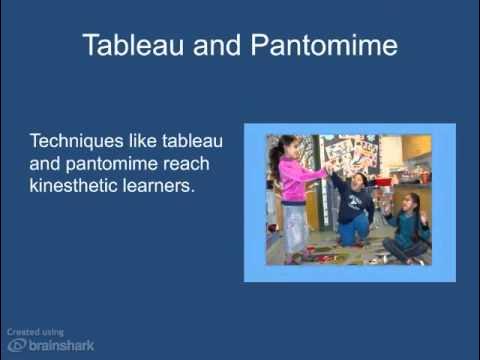Land of Learning Step 2
Summary
TLDRThis video explores how imagination in play and learning can enhance students' understanding of concepts. It focuses on creating a 'land of learning' in primary schools by designing immersive environments beyond the classroom. The video showcases how spaces like a rocket ship and a secret garden encourage children to engage creatively in learning. Teachers reflect on the organic development of play spaces, where children take ownership, turning routines and spaces into dynamic, imaginative experiences. The video demonstrates the importance of play in education and its power to transform learning into an adventure.
Takeaways
- 😀 Imagination in play and learning enhances student understanding of concepts.
- 😀 Creating a 'land of learning' involves setting up an engaging environment to support imaginative play.
- 😀 The design of the learning space should focus on immersive environments that transport students into different worlds.
- 😀 A large, creative climbing frame, such as a rocketship, can be used to foster imaginative exploration and learning.
- 😀 Learning spaces should go beyond classrooms and include surrounding areas to encourage active learning.
- 😀 The environment should allow children to engage in character-based play, which can help them explore concepts more deeply.
- 😀 Play spaces were integrated naturally during the planning process, evolving organically based on the needs of the students.
- 😀 A 'secret garden' or themed space can become an area where students take ownership and turn it into their own experience.
- 😀 Teachers and students collaborated in transforming spaces like a training camp into a structured routine for deeper learning.
- 😀 The key to creating a successful learning space is to let students shape it, allowing their imaginations to bring it to life.
Q & A
What is the main focus of the video?
-The main focus of the video is on how imagination in play and learning can enhance students' understanding of concepts, and how to set up a learning environment that fosters creativity and engagement in primary schools.
How did the design of the learning space reflect the concept of a 'land of learning'?
-The design of the space was centered around the idea of creating an immersive environment for children. The use of various play spaces, such as the rocketship and climbing frame, encouraged children to engage with learning in dynamic and imaginative ways, extending the classroom into the surrounding environment.
Why was the climbing frame mentioned in the video?
-The climbing frame was mentioned as a key feature in the 'land of learning' design. It was a large, exciting element that helped set the stage for imaginative play, such as imagining they were in a rocketship, which connected the children's physical movement with their learning experiences.
What role did the garden play in the learning environment?
-The garden, referred to as the 'secret garden' in the video, served as a designated space for play and imagination. It became a place where children could engage in routine activities like marching, and it was a space that the children helped shape, demonstrating how their creativity made the space come alive.
How did the planning sessions contribute to the design of the learning environment?
-The planning sessions allowed educators to reflect on the needs of the children each week. As new ideas emerged, the planning process helped ensure that there were appropriate spaces available for imaginative play and learning, such as the garden and other themed areas.
What does the term 'land of learning play world' refer to?
-The term 'land of learning play world' refers to the immersive, play-based learning environment that was designed to encourage students to explore concepts through imagination and physical activity. It encompasses the different spaces and activities that facilitated learning in a creative way.
Why was the space described as being 'organic' in its development?
-The space was described as 'organic' because it developed naturally over time. As educators planned and observed, the space evolved to meet the children's needs and interests, with each area and activity being introduced based on the children's responses and engagement.
How did the children contribute to the development of the learning spaces?
-The children played a significant role in shaping the learning spaces. For example, they took ownership of the garden, turning it into a routine activity involving marching and other imaginative actions. Their creativity brought the spaces to life and made them more meaningful.
What impact did imagination in play have on the students' learning?
-Imagination in play helped students engage more deeply with learning concepts. It allowed them to explore ideas in a hands-on, creative way, making the learning process more enjoyable and effective. This approach also encouraged critical thinking and problem-solving skills.
What does the video suggest about the relationship between the classroom and outdoor spaces?
-The video suggests that learning should not be confined to the classroom. By utilizing outdoor spaces, such as gardens and play areas, the environment becomes an extension of the classroom, offering more opportunities for imaginative learning and exploration beyond traditional settings.
Outlines

This section is available to paid users only. Please upgrade to access this part.
Upgrade NowMindmap

This section is available to paid users only. Please upgrade to access this part.
Upgrade NowKeywords

This section is available to paid users only. Please upgrade to access this part.
Upgrade NowHighlights

This section is available to paid users only. Please upgrade to access this part.
Upgrade NowTranscripts

This section is available to paid users only. Please upgrade to access this part.
Upgrade NowBrowse More Related Video

SMOLE, K.S. e DINIZ, M. I. Ler, escrever e resolver problemas- habilidades básicas para...- Parte 1

Tugas kuliah ENGLISH MATEMATIKA (EM) Exsa Zenita Nasution (2423035) PMTK 3B

Informal Theatre and Creative Drama

Menyusun Aktivitas Pembelajaran yang Melibatkan Siswa Secara Aktif

Week 8 Perfect Competition

Contoh Model Pembelajaran Inovatif Game Based Learning
5.0 / 5 (0 votes)